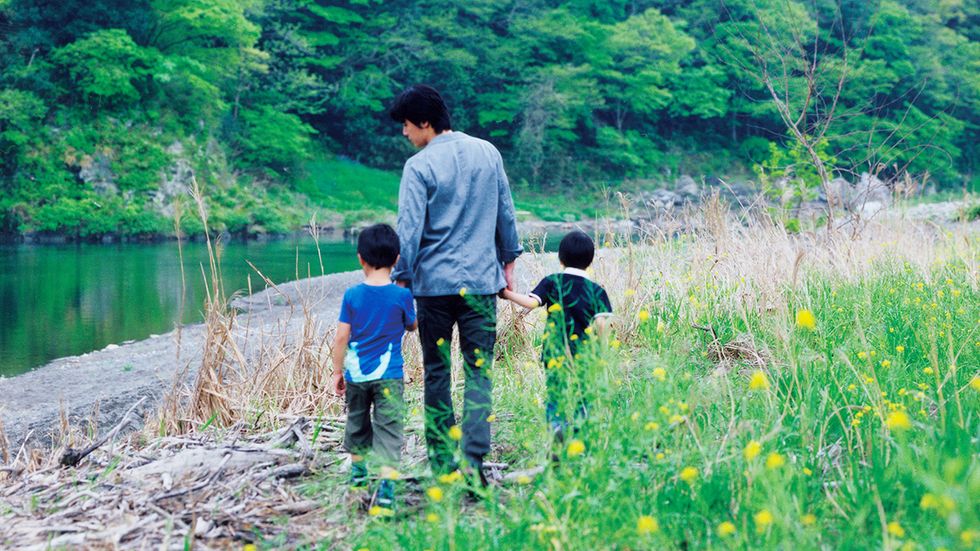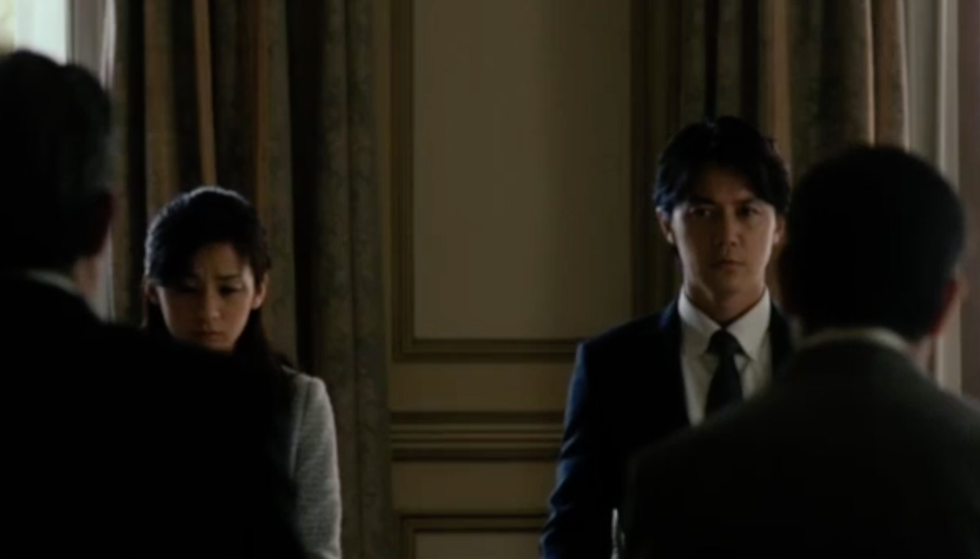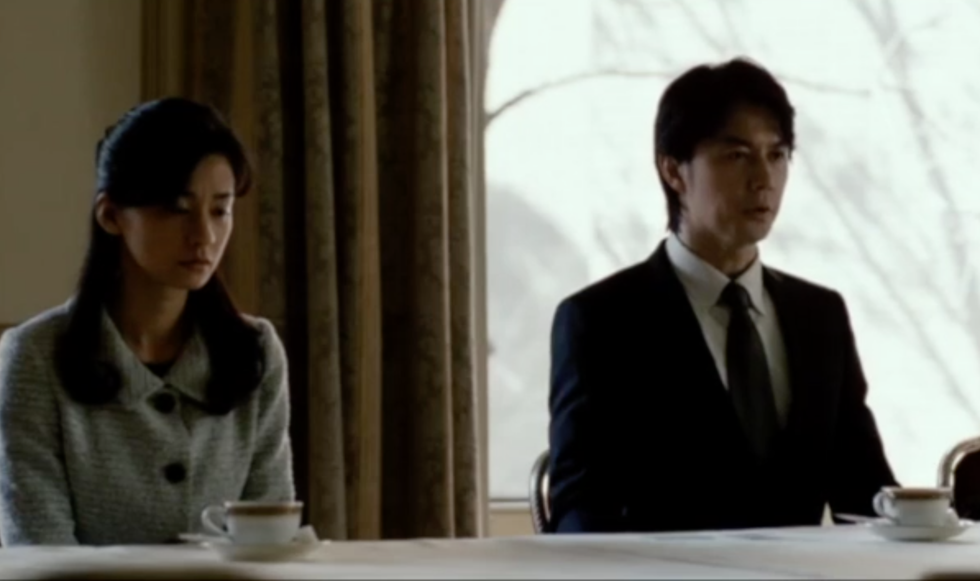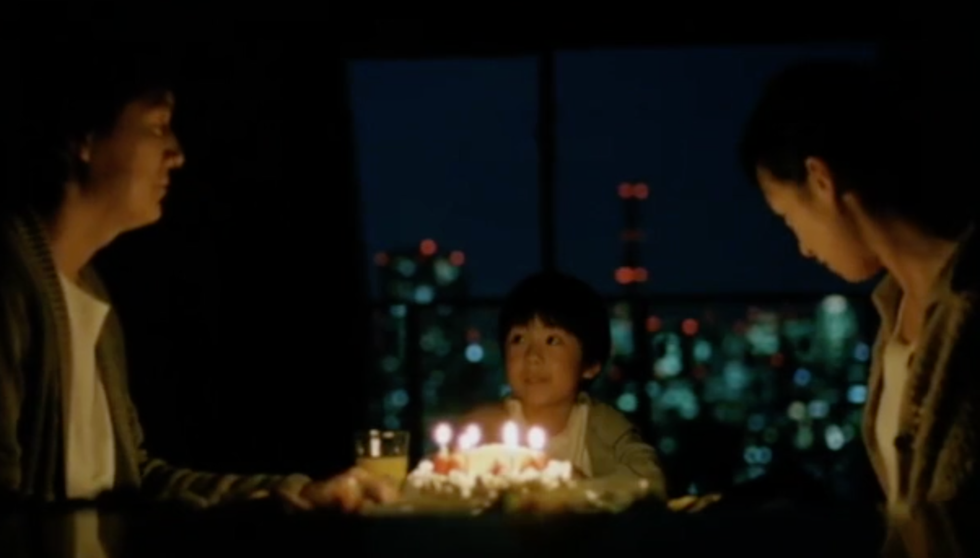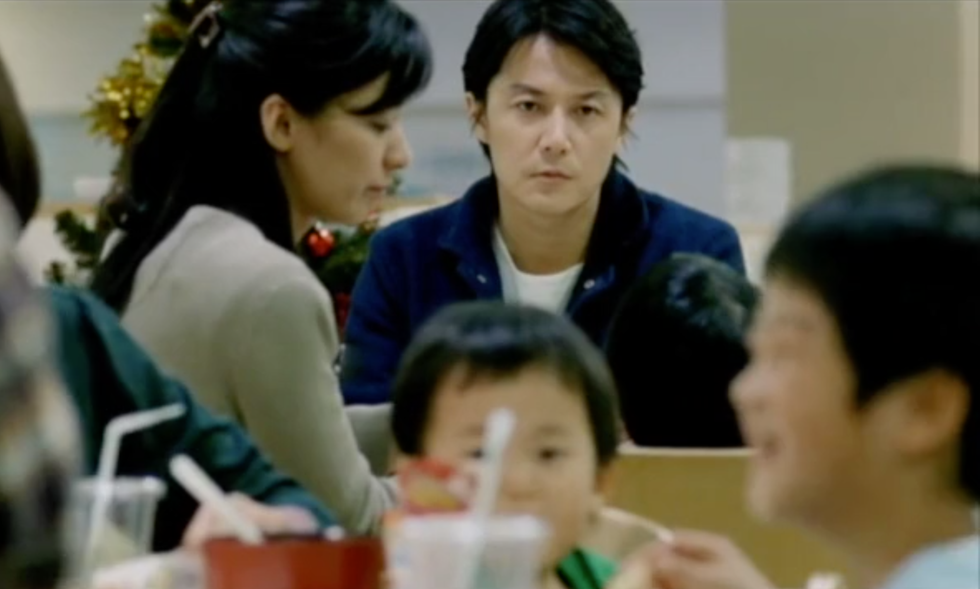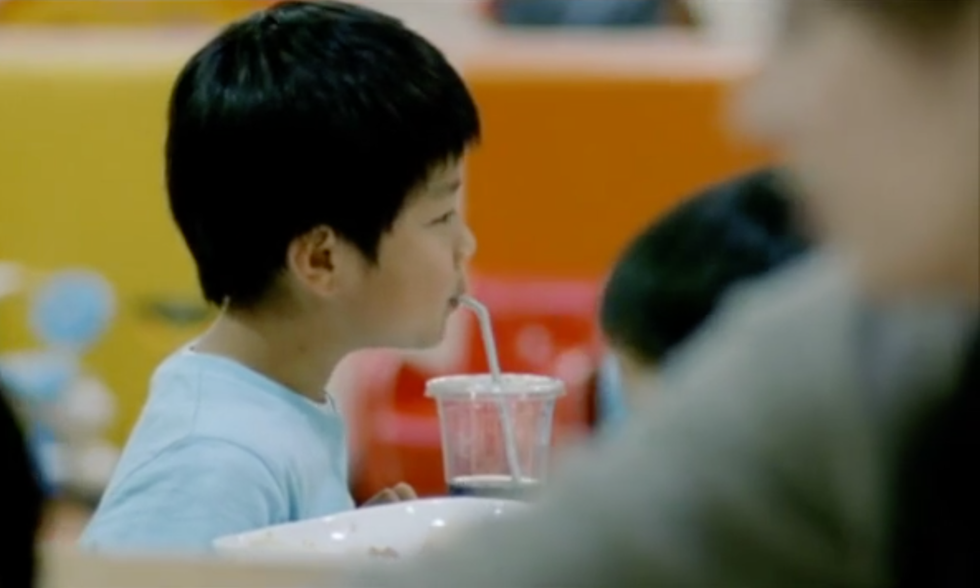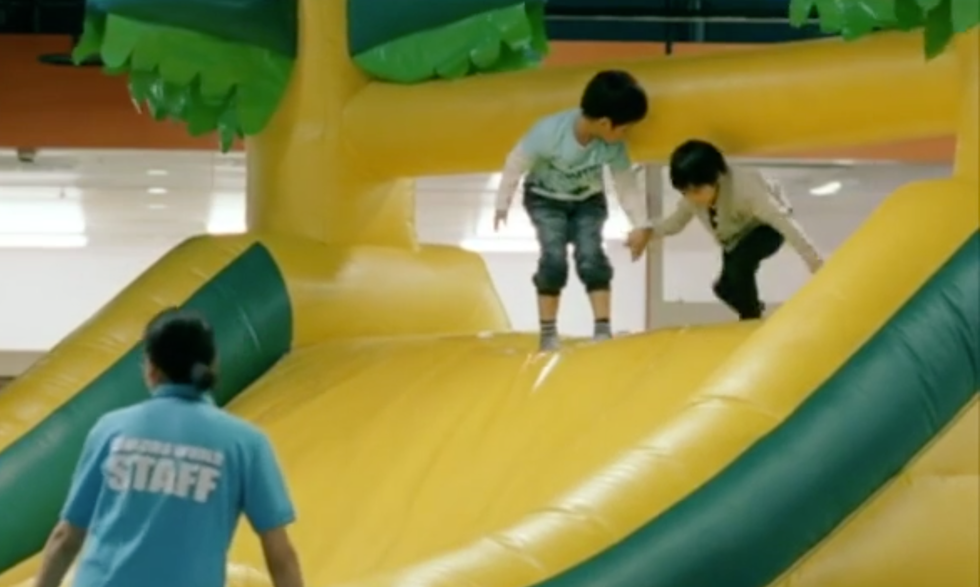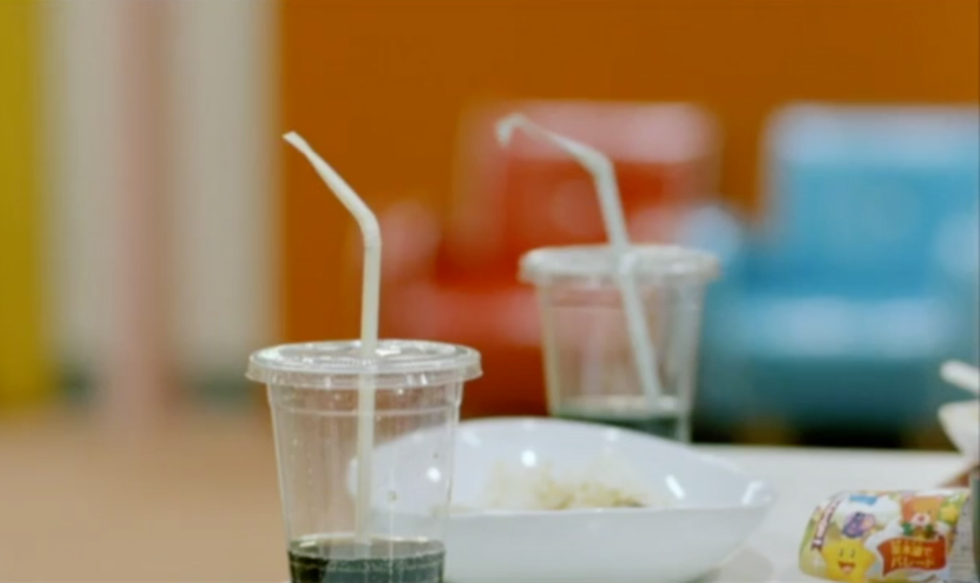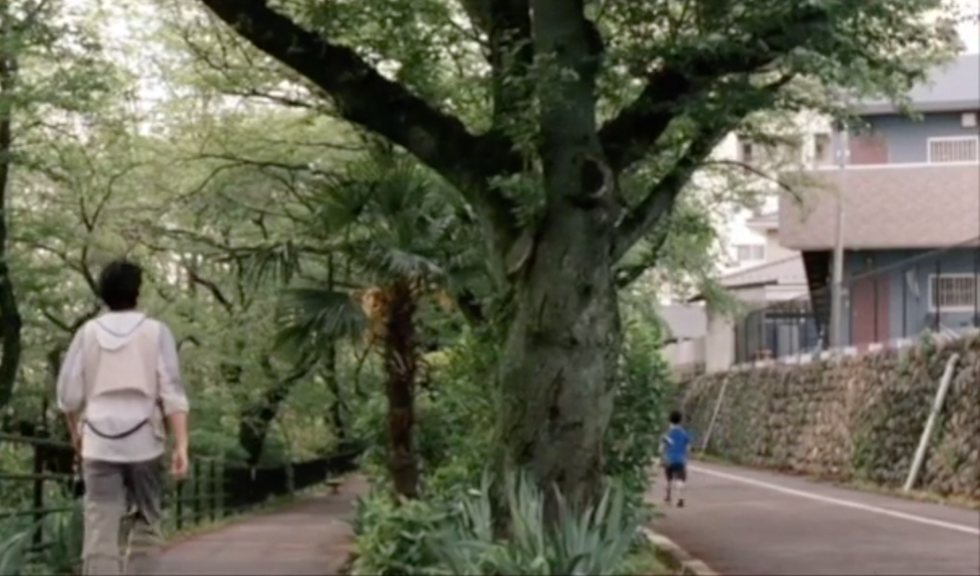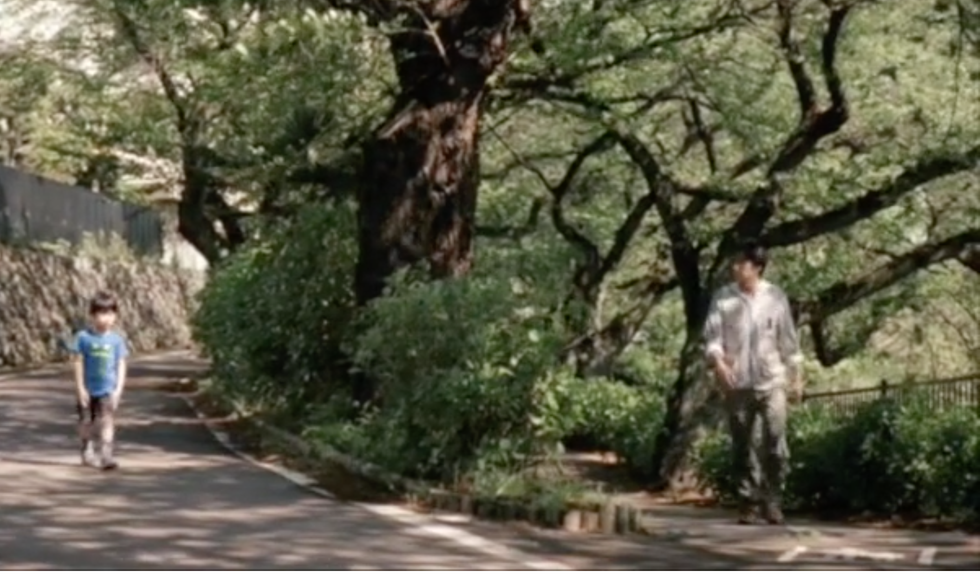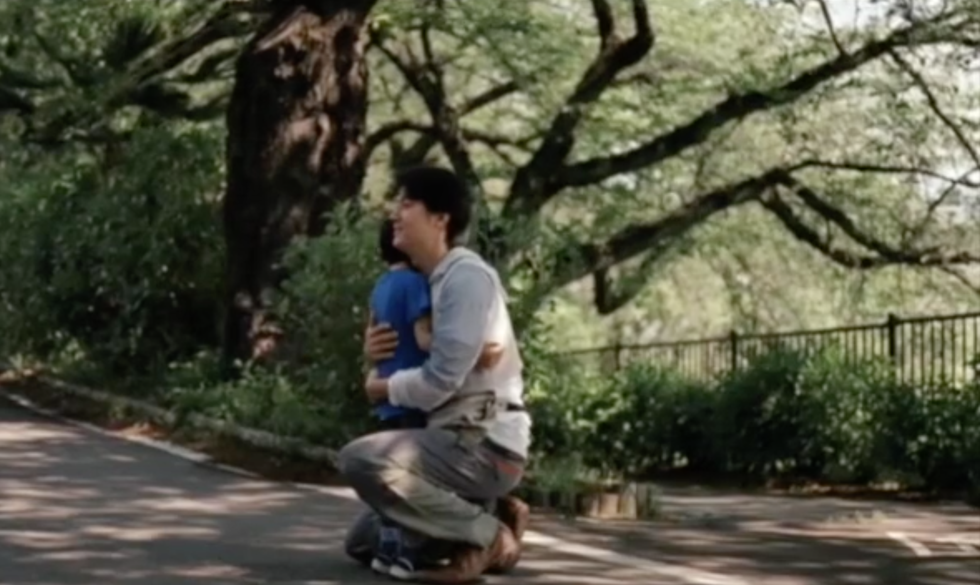What would you do if you found out the son you have raised for the past six years is not your child?
In this film color, contrast, and symbolism are some of the key artistic elements which transmit the emotional turmoil experienced by two families when they discover their sons were switched at birth.
This scene is the high point in the story. It is where we see in mid shot the Nonomiya family across from the board of directors in the hospital. This is where they face the fact that Keita’s blood work does not match his parents’ DNA. At this bleakest of moments, the scene is washed in dull and dark colors demonstrating the somber environment and the gravity of the situation. In contrast to the silence there is the cacophony of a formal banquet in the background.
The mise en scène is crafted with precision, with the chairs set equidistant from one another and even the teacups placed in perfect order on the table. It gives us a symbolic message that outwardly everything appears to be flawless. Only the expressions on Ryota and Midori’s faces are distorted with grief. The world sees a perfect family, but now, inside, everything is shattered.
Initially, both parents are given equal importance as the camera faces them directly. However, the camera angle shifts and makes it seem as if Midori is closer, placing more emphasis on her towards the end of the scene as she becomes more vocal.
From this shocking news there is a sharp transition to a delighted Ryota and Midori celebrating Keita’s achievements in school. Their change in emotion disorients the audience. We come to realize they are in denial. Keita is the center of their world and here, the light from candles accentuates Keita’s importance in their hearts.
This scene represents the perfect world of two families has started to unravel, and the final outcome of the conflict remains uncertain.
In a midshot of Ryusei we follow Ryota’s gaze as he intently stares at his biological son observing his mannerisms while the boy drinks a soda. The director chooses a simple, commonplace act as a vehicle for expressing Ryota’s sense of marvel. This is his child, yet how little he knows about him!
In contrast to the previous clip this scene is bathed in brighter tones and optimistic colors of yellow and orange.
This encounter is the instance where the boys meet for the first time. Ryusei invites Keita to play with him and holds his hand. This gesture symbolizes closeness between the two, even though the children are completely unaware of the situation between their families. Even the placement of the actors embodies the conflict. As the children leave their parents behind we see a long-shot where the Saiki family is on one side and the Nonomiya family is on the other. While they are in close proximity they are still separate and different.
Our attention is once again brought back to Ryota’ gaze as the camera follows his eyes and train of thought. Following the rule of “show, don’t tell” the director subtly conveys the power of nurture over nature. We shift to a close up of the two plastic soda cups of Yudai and his son Ryusei, both with chewed straws. Like father like son.
This is the denouement, where the conflict must reach a resolution. We follow Ryota as he chases after Keita who has run away, chanting that his Daddy is not his Daddy.
There is a lot of movement in this scene as the camera follows both Ryota and Keita side by side. The scene takes place in an open area surrounded by trees as well as man-made buildings. Vegetation is juxtaposed with human design. It serves as fitting backdrop to frame the complicated relationship between nature and nurture.
Our view of each character is veiled by foliage and branches. The obscurity is artistically appropriate. This is a time of emotional confusion, lack of clarity, of breakdown and restructuring, not knowing what to believe in, letting go of the past and accepting the new. Yet the natural daylight sets a positive mood.
Ryota attempts to explain that even though he is not Keita’s biological father, he has raised him as his very own son. Nothing else matters. The only sound that can be heard in the background is the sound of the rustling leaves. Nothing must drown out what Ryota has to say.
The camera zooms out to a long shot of both Ryota and Keita as they come to the end of their paths. We now see them clearly, as uncertainties have gone. The long paths themselves represent the long journey that Ryota and Keita have made through life together. The scene ends with a close up as Ryota lowers himself to be at eye-level with Keita, and embraces him. It is an affirmation that the bond they share is invincible. Their relationship needs only to withstand the test of love, not the test of medical evidence. They are father and son.

